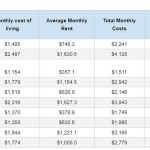Oil’s recent gains may accelerate and the price per barrel could surge to $90 if the approaching winter proves colder than normal, Jeff Currie, Goldman’s global commodities head of told Bloomberg TV. Such a rise – the result of gas for oil substitution due to exploding nat gas prices around the globe – would be $10 higher than the bank’s current forecast and would be accompanied by a prolonged period of high natural gas prices that already have had disastrous consequences for U.K. power providers.
According to Curie, who recapped a recent note from Goldman’s Damien Couravlin, the tightening gas supplies in Europe which have led to a shattering of all price records, will elevate demand for oil as an alternative at a time when global crude output is constrained, Currie said adding that post-hurricane disruptions in the Gulf of Mexico would adversely impact supply.
“Supply chains are so severely depleted that the system can not accommodate any type of disruption,” Currie said. Benchmark international oil futures rose 1.4% to $75.39 at 4:09 p.m. in London, extending the year-to-date advance to 46%.
Meanwhile, the gas rally shows no signs of abating, “particularly outside the U.S.” as tight supplies run headlong into surging demand, Currie said.
As noted above, Currie is referencing a recent note from Goldman’s Damien Courvalin, who in a note over the weekend said that global gas prices have surged as inventories remain at exceptionally low levels ahead of peak winter demand. This risk premium reflects prices testing for the marginal solutions of gas-to-oil power and industrial substitution, ahead of power blackouts. According to Goldman, the oil market can indeed help, with, for example, a one-standard colder deviation 2.5 Bcf/d boost to gas burn offset by a 0.6 mb/d increase in oil power burn (in Europe and Asia) and industrial use (in refining and petrochemical). Higher heating and residential oil usage at colder temperatures would bring the total uplift to oil demand to 0.9 mb/d through March.
And while manageable from an oil market perspective, such a one-standard deviation weather shock would nonetheless represent $5/bbl upside to the bank’s $80/bbl Brent forecast. Clearing that price threshold would in turn require TTF and JKM prices to rally above $23.5 and $25.5/mmBtu (vs. $22.5 and $25/mmBtu spot).
We estimate that the potential capacity for gas-to-oil substitution could be larger should gas rally further, of up to 1.35 mb/d in power and 0.6 mb/d in industry (in Asia and Europe), although such a large demand boost would prove too large for the oil market to absorb, leading to a spike in prices to in turn achieve oil demand destruction, the ultimate solution to widespread energy scarcity.
In fact, the challenges to gas-to-oil demand substitution may become apparent even at low volumes given already below average petroleum product inventories, infrastructure constraints at sourcing and diverting feedstocks as well as the only intermittent gas relief provided by peaking liquids plant with only days of storage. This suggests that risks to our estimated oil and gas price thresholds to absorb colder weather are skewed to the upside, as illustrated by the rally in JKM prices to $32/mmBtu this January.
On net, Goldman warns that “the tightness in global gas supplies creates a clear and potentially meaningful bullish catalyst for the oil market this winter, larger than the downside risk to global oil demand from another Delta-like COVID wave. The bullish impact of even moderate gas-to-oil substitution in power would be greater for the fuel oil and LPG markets relative to distillates given their smaller market size.”












